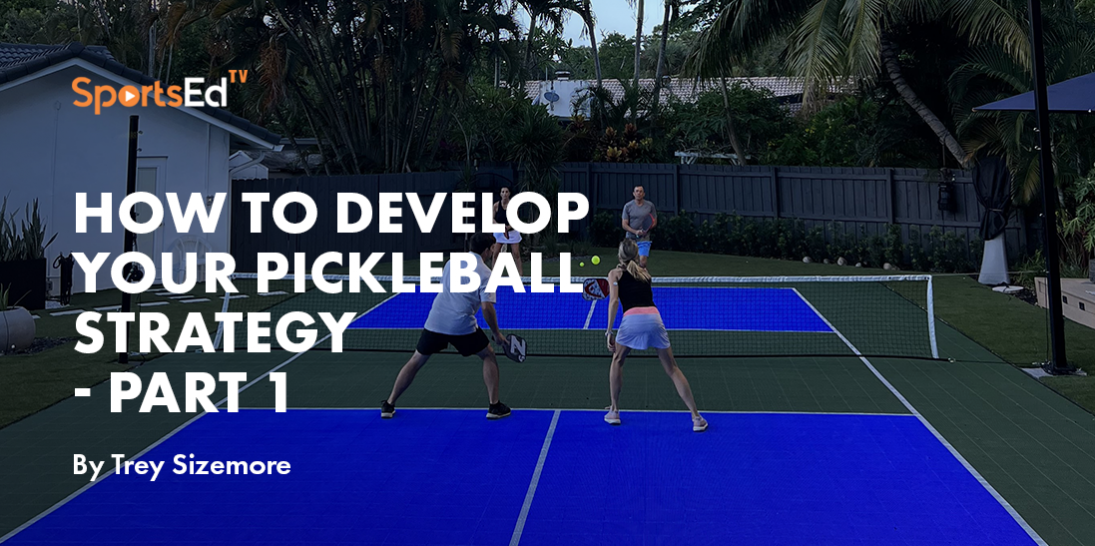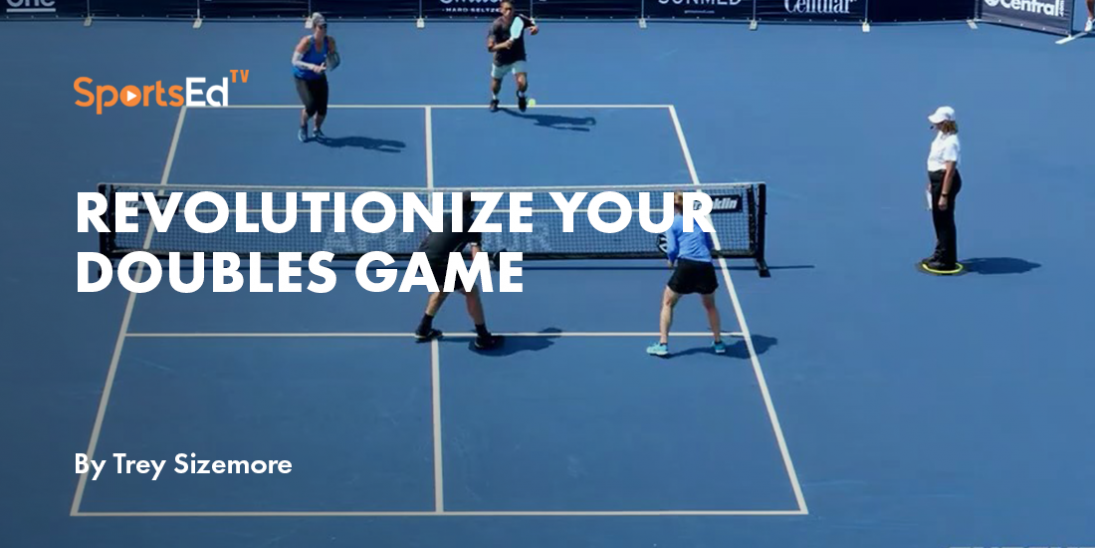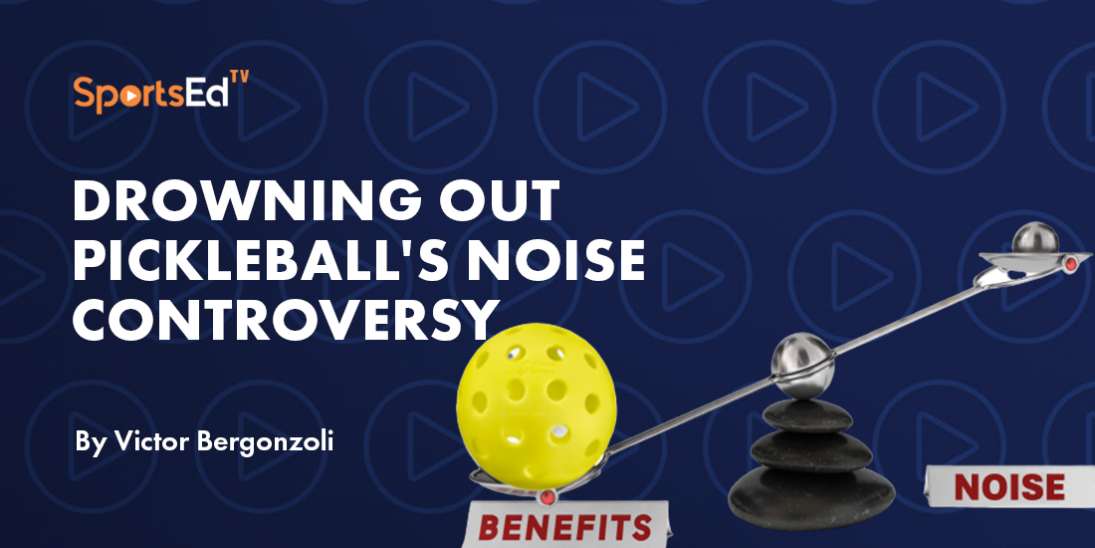Pickleball
Welcome and thanks for visiting...

How to Develop Your Pickleball Strategy - Part II
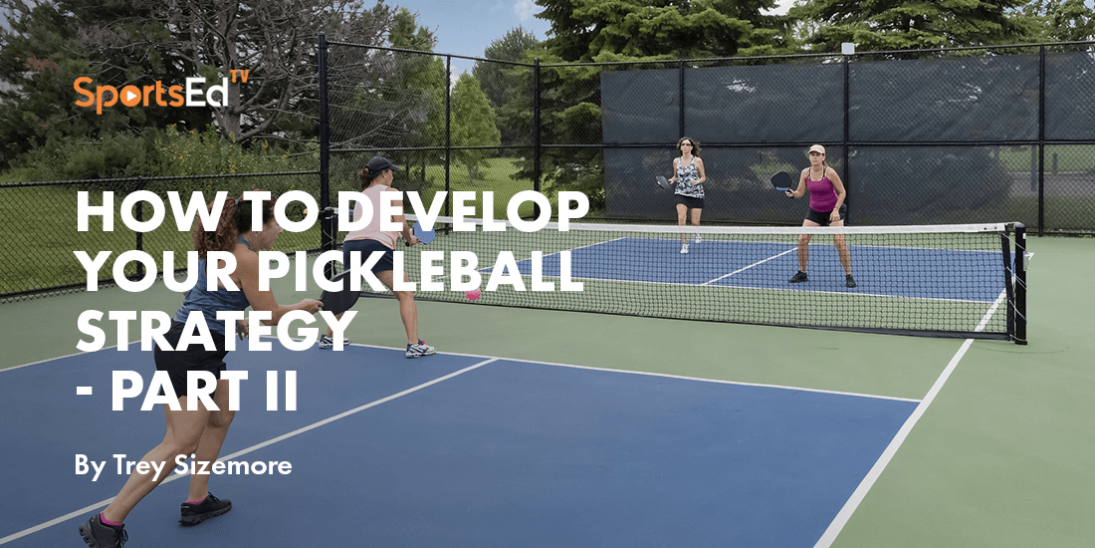
This is Part 2 of our series on How to Develop Your Pickleball Strategy. If you missed Part 1, you can read it here.
There will be times during your pickleball game when the momentum is not in your favor. Your opponents have the advantage, and you’re just looking to get the ball back over and stay in the point.
When you’re in trouble and off-balance, you want to buy yourself more time. More time to reset:
- The body
- The mind
- Your team
- And to defend against the next attack
This is where it’s great to understand the concept of ‘Reset Areas’ on the court.
What are Reset Areas in Pickleball?
Reset areas are areas of the court where you hit balls that cannot be attacked by your opponents while also buying you time.
Resets are used to slow down, buy time, and hit balls that can’t be attacked by your opponents.
The reset areas on the court are two triangles deep in the opponents’ court, two ‘outside’ triangles in the kitchen, as well as the half of the kitchen area closest to the net (what we refer to in Dynamite Doubles for Pickleball as squares 1, 2, and 3)
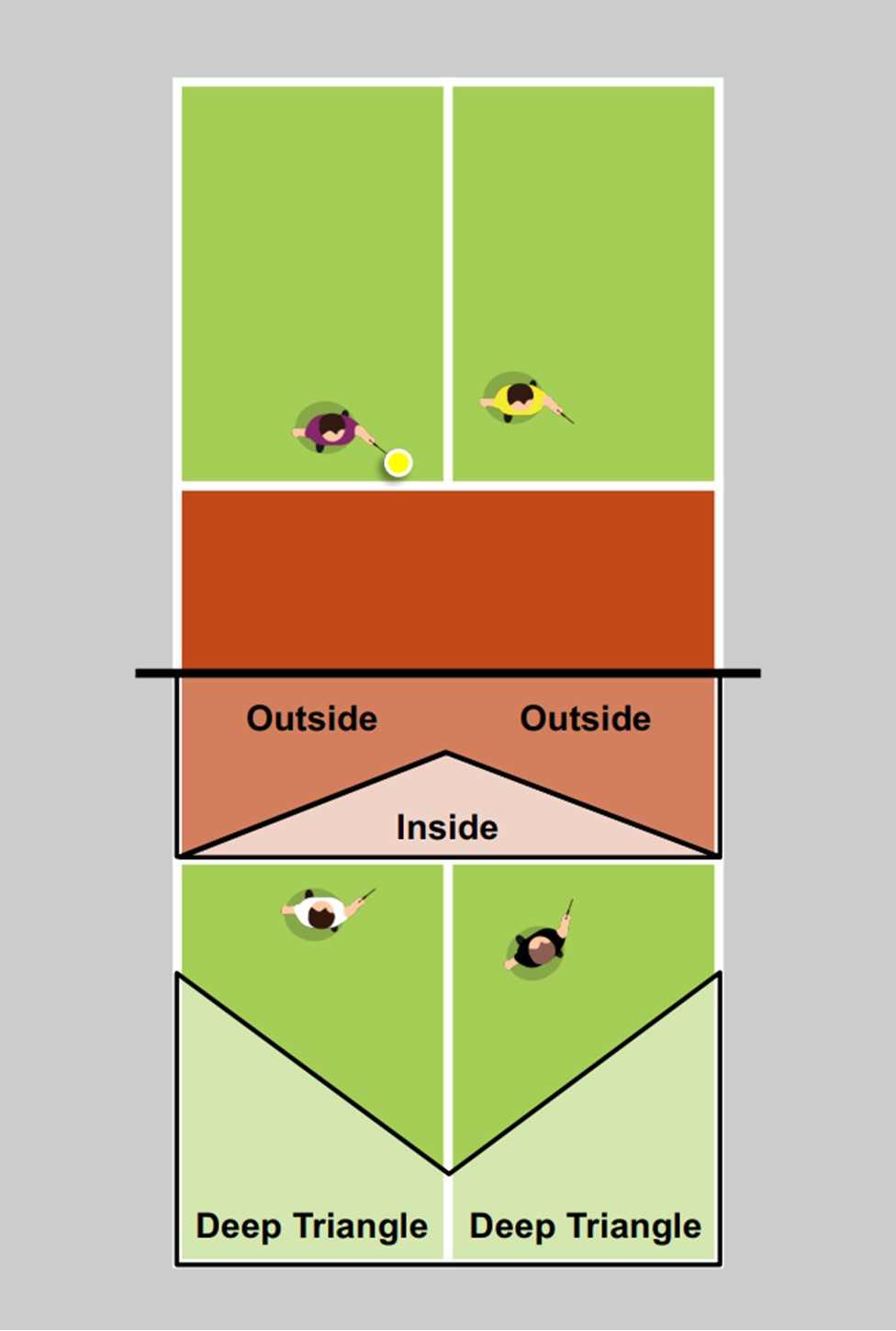
Deep Triangles
The deep triangles on the court are typically reached via lobs. Typically these are used when your opponents are up near the kitchen and you’re recovering with a lob trying to get them off balance and out of the Offense Zone.
If hit well, this reset could turn into an Offensive Lob for you, but the primary intent is to get an opponent back in the court and give you and your partner time to recover.
The deep triangle reset areas are also used when your momentum would make it difficult to hit the reset areas in the kitchen in front of your opponents.
Kitchen (Triangles &; Squares)
The entire kitchen is a reset area and a go-to target when you’re in trouble. Anytime you hit a drop into the kitchen, you’ve bought some time and temporarily brought your team to neutral.
Within the kitchen, we have three triangles, two outside and one in the middle.
Hitting outside to outside triangle and inside to inside are the safest shots in order to keep you and your partner in the best position possible to defend.
If you’re outside then going middle, you’re not going to know which opponent will be hitting it, and thus who (you or your partner) should be going back for lobs and covering the largest part of your court. (For more detail on roles, see the article on Blocker-Workhorse here)
The half of the kitchen closest to the net should be considered a ‘true’ reset area, while the deeper part of the kitchen is more for offensive/dictating shots.
Beating Bangers
A final variation of the reset is hitting into the feet of the deepest opponent on the court. Shots hit to the feet (and thus taken as half-volleys in most cases) are hard to return with any type of offense.
This makes it a great response when you’re playing against the ‘Bangers’ who are hitting at you with a lot of pace, trying to force an error by overpowering you.
When playing against Bangers, you want to hit hard on hard. You’re not trying to take a hard-paced shot and drop it in the kitchen, but rather reflex-volley back hard at the feet of the deepest opponent to nullify their strategy.
If you can place your shot in one of your opponents’ reset areas at any given time from any place on the court, you can not only get yourself out of a lot of trouble during a point, but you can also turn bad situations into opportunities.
So if you’re off balance, hitting from a defensive position, especially up at the kitchen, and you do not see a clear opportunity to win the point, push your ‘Reset button’ and start again.



